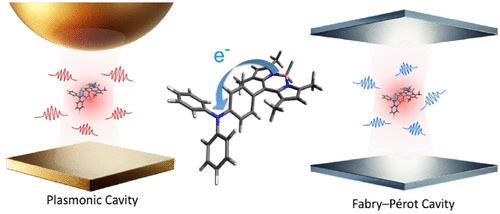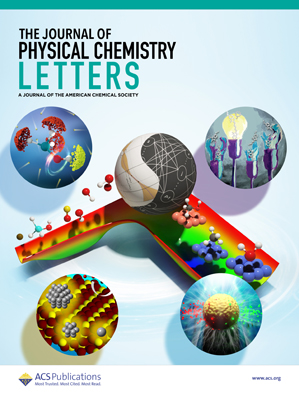Chemistry Meets Plasmon Polaritons and Cavity Photons: A Perspective from Macroscopic Quantum Electrodynamics
IF 4.6
2区 化学
Q2 CHEMISTRY, PHYSICAL
引用次数: 0
Abstract
The interaction between light and molecules under quantum electrodynamics (QED) has long been less emphasized in physical chemistry, as semiclassical theories have dominated due to their relative simplicity. Recent experimental advances in polariton chemistry highlight the need for a theoretical framework that transcends traditional cavity QED and molecular QED models. Macroscopic QED is presented as a unified framework that seamlessly incorporates infinite photonic modes and dielectric environments, enabling applications to systems involving plasmon polaritons and cavity photons. This Perspective demonstrates the applicability of macroscopic QED to chemical phenomena through breakthroughs in molecular fluorescence, resonance energy transfer, and electron transfer. The macroscopic QED framework not only resolves the limitations of classical theories in physical chemistry but also achieves parameter-free predictions of experimental results, bridging quantum optics and material science. By addressing theoretical bottlenecks and unveiling new mechanisms, macroscopic QED establishes itself as an indispensable tool for studying QED effects on chemical systems.

化学遇到等离子激元和腔光子:从宏观量子电动力学的角度
在量子电动力学(QED)下,光与分子之间的相互作用在物理化学中一直不被重视,因为半经典理论由于其相对简单而占主导地位。近年来极化化学实验的进展突出了对超越传统腔QED和分子QED模型的理论框架的需求。宏观QED是一个统一的框架,它无缝地结合了无限光子模式和介电环境,使其应用于涉及等离子激元极化子和腔光子的系统。这一视角通过在分子荧光、共振能量转移和电子转移方面的突破,证明了宏观QED对化学现象的适用性。宏观QED框架不仅解决了物理化学经典理论的局限性,而且实现了实验结果的无参数预测,架起了量子光学与材料科学的桥梁。通过解决理论瓶颈和揭示新的机制,宏观QED成为研究QED对化学系统影响不可或缺的工具。
本文章由计算机程序翻译,如有差异,请以英文原文为准。
求助全文
约1分钟内获得全文
求助全文
来源期刊

The Journal of Physical Chemistry Letters
CHEMISTRY, PHYSICAL-NANOSCIENCE & NANOTECHNOLOGY
CiteScore
9.60
自引率
7.00%
发文量
1519
审稿时长
1.6 months
期刊介绍:
The Journal of Physical Chemistry (JPC) Letters is devoted to reporting new and original experimental and theoretical basic research of interest to physical chemists, biophysical chemists, chemical physicists, physicists, material scientists, and engineers. An important criterion for acceptance is that the paper reports a significant scientific advance and/or physical insight such that rapid publication is essential. Two issues of JPC Letters are published each month.
 求助内容:
求助内容: 应助结果提醒方式:
应助结果提醒方式:


